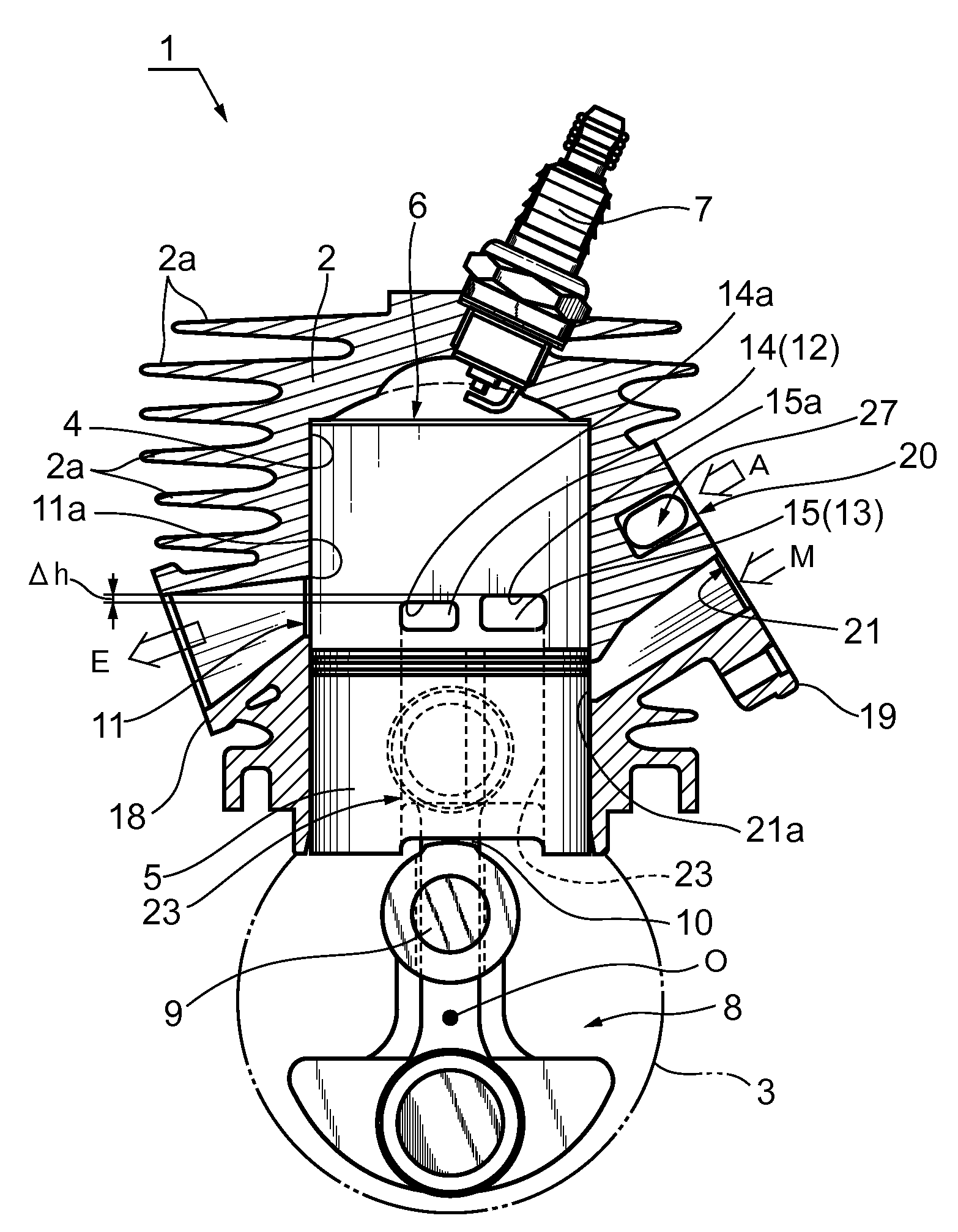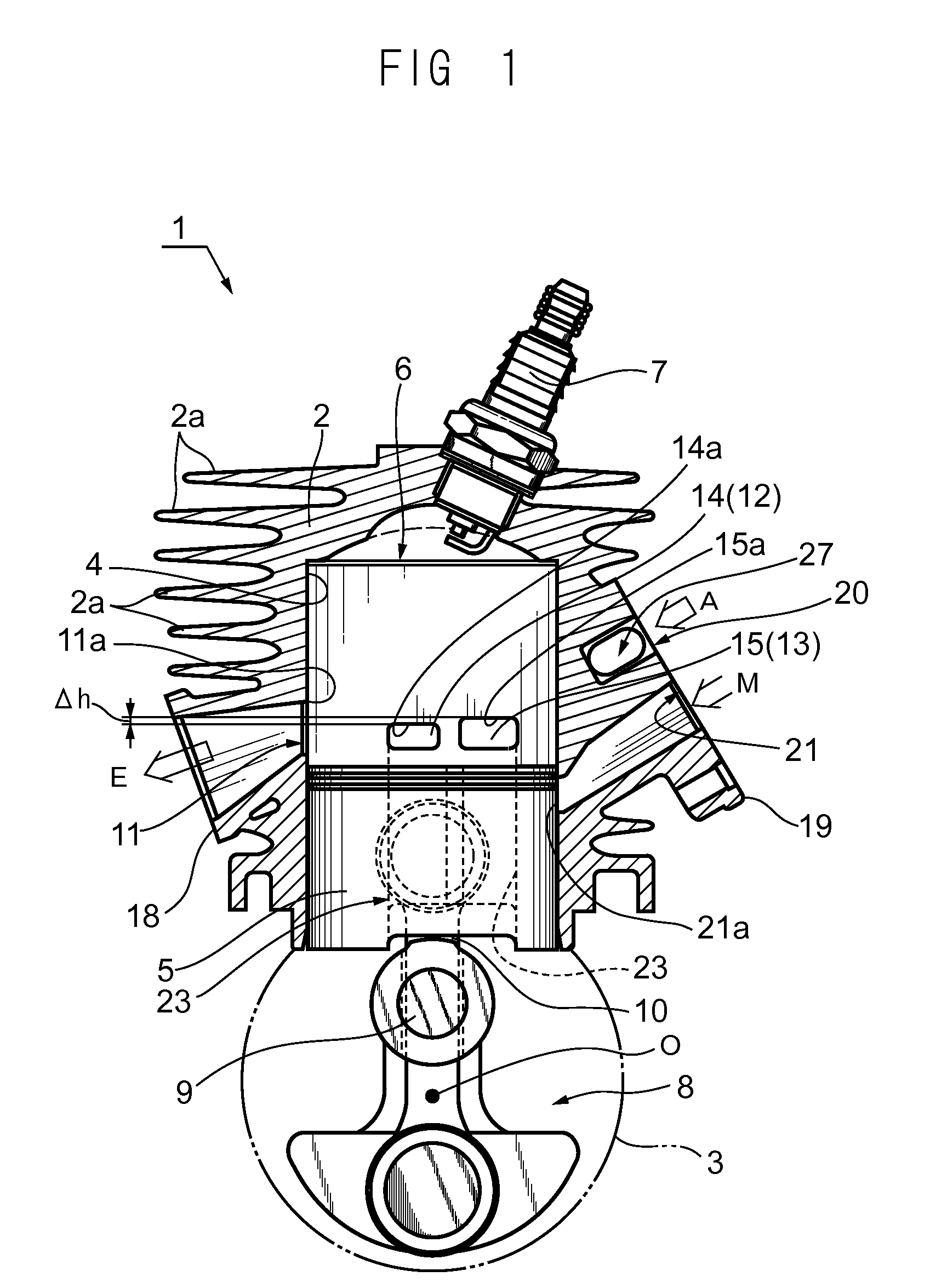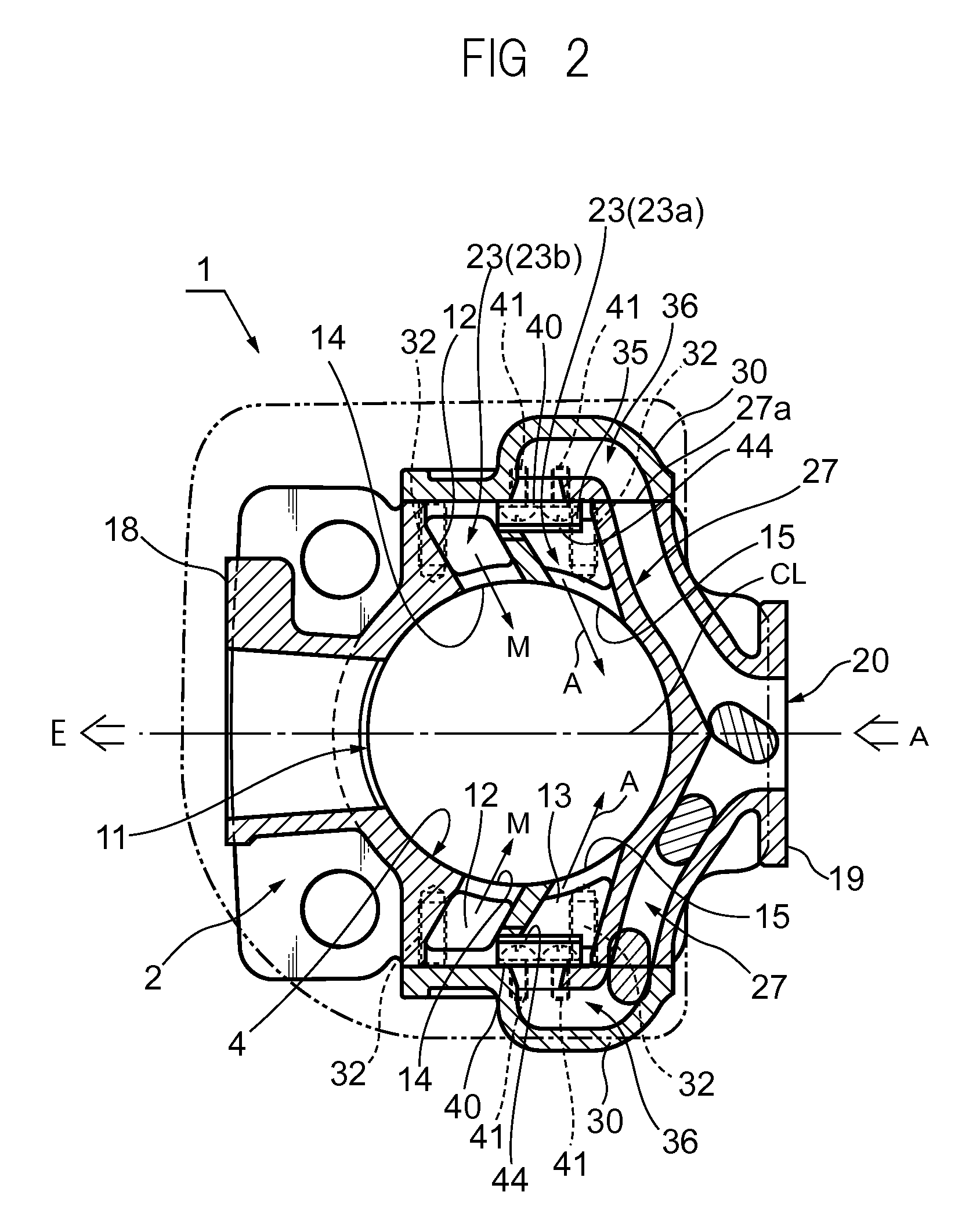Two-Stroke Internal Combustion Engine
a two-stroke, internal combustion technology, applied in the direction of combustion engines, reciprocating piston engines, positive displacement engines, etc., can solve the problems of difficult to take effective measures to reduce the emissions of two-stroke engines, and achieve the effect of preventing the phenomenon of “blow-by” and reducing the content of harmful emissions
- Summary
- Abstract
- Description
- Claims
- Application Information
AI Technical Summary
Benefits of technology
Problems solved by technology
Method used
Image
Examples
Embodiment Construction
[0032]A two-stroke internal combustion engine according to an embodiment of the present invention and some changes thereof are explained below with reference to the accompanying drawings. FIG. 1 and other drawings illustrate an example to be brought into operation as a single-cylinder. The two-stroke internal combustion engine generally designated with reference numeral 1 is a four-flow scavenging, air-cooled, compact two-stroke gasoline engine used in portable power working machines.
[0033]As shown in FIG. 1, the engine 1 includes a cylinder block 2 having cooling fins 2a, and a crank case 3 connected to the bottom of the cylinder block 2. A cylinder bore 4 formed in the cylinder block 2 fittingly receives a piston 5 to permit its reciprocal movement therein. The piston 5 defines a combustion chamber 6 in the cylinder bore 4.
[0034]The combustion chamber 6 has a squish-dome (hemispherical) shape. An ignition plug 7 is disposed at the top of the combustion chamber 6. In a crank chambe...
PUM
 Login to View More
Login to View More Abstract
Description
Claims
Application Information
 Login to View More
Login to View More - R&D
- Intellectual Property
- Life Sciences
- Materials
- Tech Scout
- Unparalleled Data Quality
- Higher Quality Content
- 60% Fewer Hallucinations
Browse by: Latest US Patents, China's latest patents, Technical Efficacy Thesaurus, Application Domain, Technology Topic, Popular Technical Reports.
© 2025 PatSnap. All rights reserved.Legal|Privacy policy|Modern Slavery Act Transparency Statement|Sitemap|About US| Contact US: help@patsnap.com



